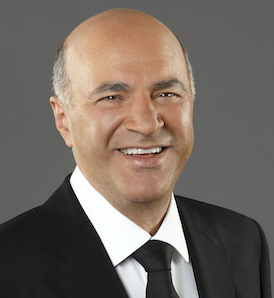There’s nothing more appealing to a consumer than good packaging and fair pricing. Either by accident or intention, cannabis packaging in Michigan tends to fall short of that standard. We’ve seen bad knockoffs of popular candy brands, in both name and design and kid-friendly graphics. If the cannabis industry wants to be taken seriously, we need to present ourselves in a mature manner and product packaging and branding should reflect that.
When Michigan’s licensing entity LARA sent out guidelines recently about cannabis packaging, we were pleased to see that they are serious about making packaging unappealing to children.
Their cannabis packaging rules state:
No edible marihuana product can be in a shape, color, package, or labeled in a manner that it would appeal to minors aged 17 years or younger.


No edible marihuana product can be associated with or have cartoons, caricatures, toys, colors, designs, shapes, labels, or package that would appeal to minors.
No edible marihuana product can be easily confused with commercially sold candy. The use of the word candy or candies on the packaging or labeling is prohibited.
An edible marihuana product must be in child-resistant packages or containers.
In Michigan cannabis is still medicine and is sold to adults (or to an adult for a card-holding minor). It needs packaging that acknowledges this but also remains appealing. Think about the over-the-counter drugs you might buy or herbal supplements. Those products have packaging that is professional, serious and not appealing to kids.
 Cannabis edibles are an upscale product, they’re not inexpensive to purchase and the packaging should reflect the quality of the product contained inside. That’s not to say it has to be expensive or over-packaged, but it does need to be thoughtful in its presentation. People make decisions in a provisioning center based on several factors including price, a word of mouth recommendation, advice from the budtender behind the counter and the appearance of a package.
Cannabis edibles are an upscale product, they’re not inexpensive to purchase and the packaging should reflect the quality of the product contained inside. That’s not to say it has to be expensive or over-packaged, but it does need to be thoughtful in its presentation. People make decisions in a provisioning center based on several factors including price, a word of mouth recommendation, advice from the budtender behind the counter and the appearance of a package.
Studies show that the time slot in which a shelved product can capture the attention of a consumer is very short, one to two seconds. This is why it’s so important for cannabis packaging to be well-designed. You just don’t have that long to get someone’s attention.
 Today, brands across every sector are facing an increasingly competitive landscape and an increasingly sophisticated consumer. People tend to disregard mass brand communications in favor of more personalized messaging mediums. Packaging has the power to connect with the consumer to communicate a brand’s message on a physical and individual level.
Today, brands across every sector are facing an increasingly competitive landscape and an increasingly sophisticated consumer. People tend to disregard mass brand communications in favor of more personalized messaging mediums. Packaging has the power to connect with the consumer to communicate a brand’s message on a physical and individual level.
How many times have you purchased a bottle of wine solely on your attraction to the label? Cannabis products should be thought of similarly.
Smart packaging design is effective because, more than any other medium, it stays true to the product. It’s the main interface between a brand and consumer. Packaging conveys a host of messages that appeal to different consumers—both young and older, through elements of design such as naming, color, typography, graphics, structure and texture. We think Willie’s Reserve does this right.
 An experienced designer can look at the product and create packaging that is sophisticated, appealing and true to the product inside. There’s really no reason that cartoons, colors and childish fonts need to be used in cannabis products.
An experienced designer can look at the product and create packaging that is sophisticated, appealing and true to the product inside. There’s really no reason that cartoons, colors and childish fonts need to be used in cannabis products.
Packaging is part of a cannabis brand and being consistent is important.
Branding is one of the most important aspects of your cannabis business—whether you’re large, small, retail or business to business. Your brand is not just a logo, website, corporate identity or marketing collateral. It is your company’s personality. It’s your confidence, passion, action, voice, and set of values that make your company unique. Your brand needs to resonate with audiences in an emotive way.
Quality cannabis packaging is a necessity.
Packaging design for the cannabis industry needs to be more than simply slapping a pot leaf or joint on a box. Now, more than ever, it’s critical to catch the consumer’s eye as the cannabis marketplace continues to evolve and competition grows.
If you need ideas or assistance with packaging design, Canna Communication can help. We understand the new Michigan rules and we know the art of packaging design.






 Eric has been working with investors and startups outside of cannabis for a decade at the Michigan SBDC and since leaving the SBDC has been helping bridge the funding gap in the cannabis space. His company, Left Coast Capital works with investors looking for solid businesses, in cannabis and other businesses as well.
Eric has been working with investors and startups outside of cannabis for a decade at the Michigan SBDC and since leaving the SBDC has been helping bridge the funding gap in the cannabis space. His company, Left Coast Capital works with investors looking for solid businesses, in cannabis and other businesses as well.  8) You must be able to talk about how you’re going to handle cash and mitigate the risk involved with it. “Investors want to know that their investment won’t be lost at gunpoint. Know what you’re doing to handle cash and security.”
8) You must be able to talk about how you’re going to handle cash and mitigate the risk involved with it. “Investors want to know that their investment won’t be lost at gunpoint. Know what you’re doing to handle cash and security.”